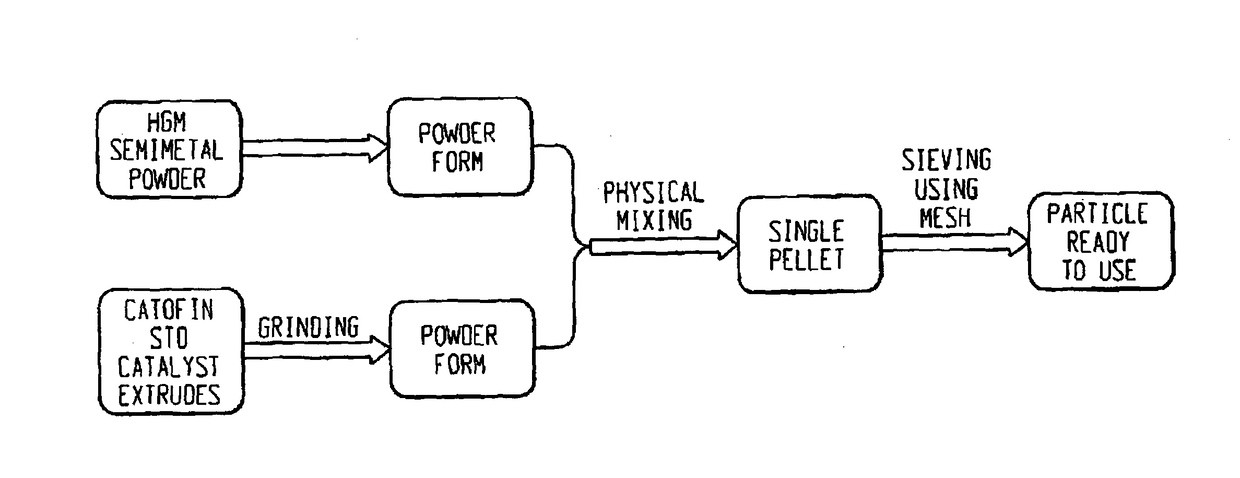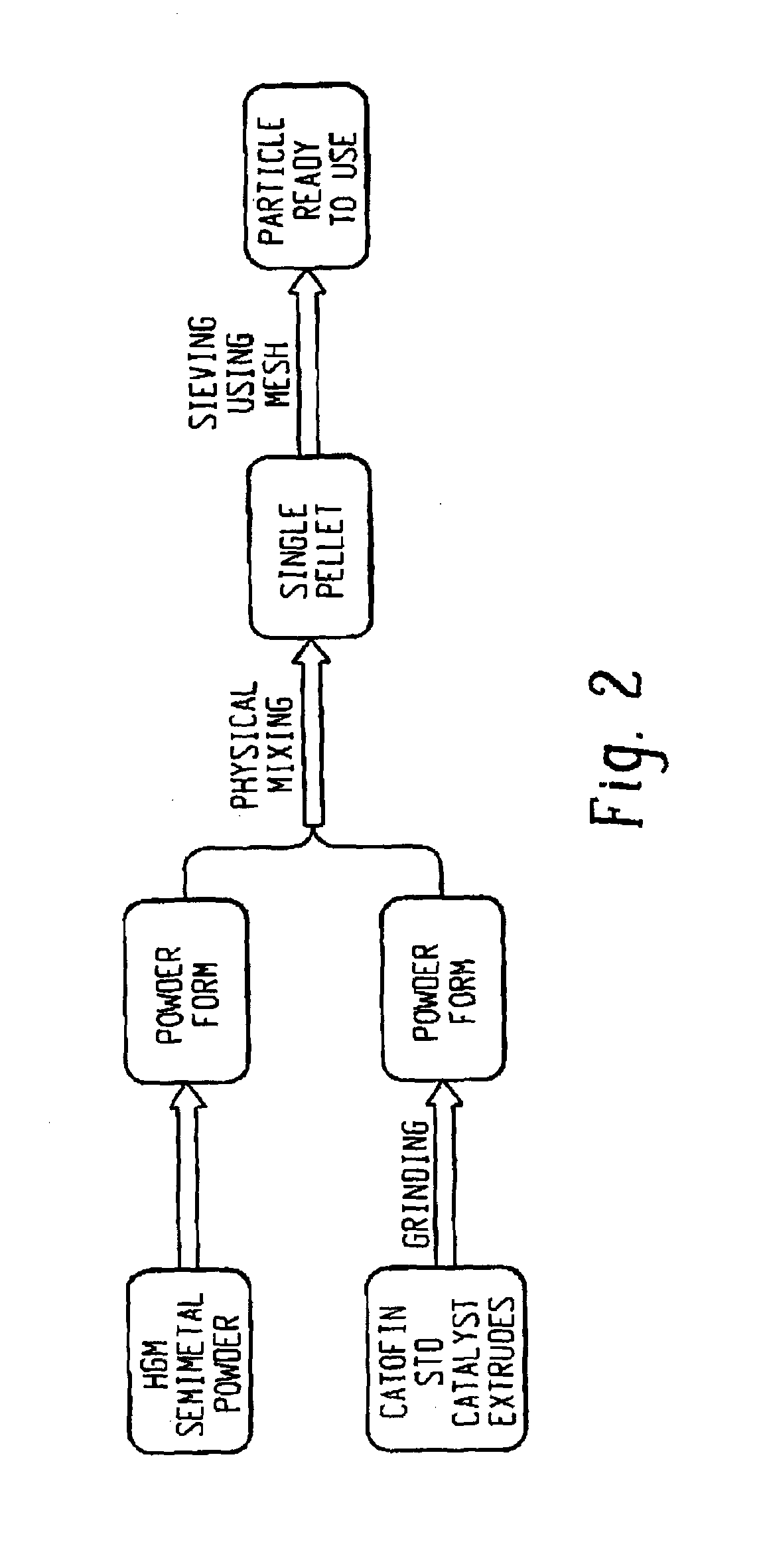Catalytic composite and improved process for dehydrogenation of hydrocarbons
a composite and hydrocarbon technology, applied in the field of catalytic composites, can solve the problems of low desired product selectivity and quality, high exothermicity, and non-oxidative processes
- Summary
- Abstract
- Description
- Claims
- Application Information
AI Technical Summary
Benefits of technology
Problems solved by technology
Method used
Image
Examples
embodiment 1
[0058] A catalytic composite suitable for a cyclic process of adiabatic, non-oxidative dehydrogenation of an alkane into an olefin, comprising: a dehydrogenation catalyst; a semimetal; and a carrier supporting the dehydrogenation catalyst and the semimetal; wherein the semimetal is inert towards the dehydrogenation, and releases heat in situ when exposed to at least one of a reducing stage and an oxidizing stage of the cyclic process.
[0059]Embodiment 2: The catalytic composite of Embodiment 1, wherein the semimetal is at least one of boron, silicon, germanium, arsenic, antimony, tellurium, polonium, and astatine.
embodiment 3
[0060] The catalytic composite of any of the previous Embodiments, wherein the semimetal is a combination comprising at least one of boron, silicon, germanium, arsenic, antimony, tellurium, polonium, and astatine.
embodiment 4
[0061] The catalytic composite of any of the previous Embodiments, wherein the semimetal is antimony.
PUM
| Property | Measurement | Unit |
|---|---|---|
| Particle size | aaaaa | aaaaa |
| Particle size | aaaaa | aaaaa |
| Energy | aaaaa | aaaaa |
Abstract
Description
Claims
Application Information
 Login to View More
Login to View More - R&D
- Intellectual Property
- Life Sciences
- Materials
- Tech Scout
- Unparalleled Data Quality
- Higher Quality Content
- 60% Fewer Hallucinations
Browse by: Latest US Patents, China's latest patents, Technical Efficacy Thesaurus, Application Domain, Technology Topic, Popular Technical Reports.
© 2025 PatSnap. All rights reserved.Legal|Privacy policy|Modern Slavery Act Transparency Statement|Sitemap|About US| Contact US: help@patsnap.com



